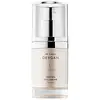What's inside
What's inside
 Key Ingredients
Key Ingredients

 Benefits
Benefits

 Concerns
Concerns

 Ingredients Side-by-side
Ingredients Side-by-side

Water
Skin ConditioningHelianthus Annuus Seed Oil
EmollientGlycerin
HumectantDimethicone
EmollientIsopropyl Palmitate
EmollientPalmitoyl Tripeptide-1
Skin ConditioningPalmitoyl Tetrapeptide-7
Skin ConditioningSteareth-20
CleansingChrysin
Skin ConditioningN-Hydroxysuccinimide
Skin ConditioningButylene Glycol
HumectantCarbomer
Emulsion StabilisingPolysorbate 20
EmulsifyingGlycol Distearate
EmollientGlyceryl Stearate
EmollientPEG-100 Stearate
Stearic Acid
CleansingStearyl Alcohol
EmollientPhytonadione Epoxide
AstringentVitis Vinifera Seed Oil
EmollientPersea Gratissima Oil
Skin ConditioningTocopheryl Acetate
AntioxidantAllantoin
Skin ConditioningTitanium Dioxide
Cosmetic ColorantTetrasodium EDTA
Triethanolamine
BufferingPhenoxyethanol
PreservativeEthylhexylglycerin
Skin ConditioningWater, Helianthus Annuus Seed Oil, Glycerin, Dimethicone, Isopropyl Palmitate, Palmitoyl Tripeptide-1, Palmitoyl Tetrapeptide-7, Steareth-20, Chrysin, N-Hydroxysuccinimide, Butylene Glycol, Carbomer, Polysorbate 20, Glycol Distearate, Glyceryl Stearate, PEG-100 Stearate, Stearic Acid, Stearyl Alcohol, Phytonadione Epoxide, Vitis Vinifera Seed Oil, Persea Gratissima Oil, Tocopheryl Acetate, Allantoin, Titanium Dioxide, Tetrasodium EDTA, Triethanolamine, Phenoxyethanol, Ethylhexylglycerin
Water
Skin ConditioningButylene Glycol
HumectantGlycerin
HumectantAlcohol
AntimicrobialDipropylene Glycol
HumectantHydrogenated Lecithin
EmulsifyingAdenosine
Skin ConditioningAlteromonas Ferment Extract
Skin ConditioningAphanothece Sacrum Polysaccharide
AbsorbentBetula Platyphylla Japonica Juice
Skin ConditioningCamellia Sinensis Leaf Extract
AntimicrobialCeramide Ng
Skin ConditioningDelesseria Sanguinea Extract
Skin ConditioningHibiscus Esculentus Fruit Extract
Skin ConditioningHydrolyzed Rice Leaf Extract
AntioxidantHydroxyproline
Skin ConditioningOryza Sativa Bran Extract
Skin ConditioningPanthenol
Skin ConditioningRhodomyrtus Tomentosa Fruit Extract
HumectantRibes Nigrum Fruit Extract
AstringentTocopherol
AntioxidantAcrylates/C10-30 Alkyl Acrylate Crosspolymer
Emulsion StabilisingDisodium Phosphate
BufferingDisodium Succinate
MaskingEctoin
Skin ConditioningGlycine Soja Sterols
EmollientNylon-12
PEG-30 Phytosterol
EmulsifyingPhytosterols
Skin ConditioningPvp
Emulsion StabilisingSilica
AbrasiveSodium Carbomer
Emulsion StabilisingSodium Hydroxide
BufferingSodium Phosphate
BufferingSuccinic Acid
BufferingPhenoxyethanol
PreservativeParfum
MaskingLimonene
PerfumingLinalool
PerfumingWater, Butylene Glycol, Glycerin, Alcohol, Dipropylene Glycol, Hydrogenated Lecithin, Adenosine, Alteromonas Ferment Extract, Aphanothece Sacrum Polysaccharide, Betula Platyphylla Japonica Juice, Camellia Sinensis Leaf Extract, Ceramide Ng, Delesseria Sanguinea Extract, Hibiscus Esculentus Fruit Extract, Hydrolyzed Rice Leaf Extract, Hydroxyproline, Oryza Sativa Bran Extract, Panthenol, Rhodomyrtus Tomentosa Fruit Extract, Ribes Nigrum Fruit Extract, Tocopherol, Acrylates/C10-30 Alkyl Acrylate Crosspolymer, Disodium Phosphate, Disodium Succinate, Ectoin, Glycine Soja Sterols, Nylon-12, PEG-30 Phytosterol, Phytosterols, Pvp, Silica, Sodium Carbomer, Sodium Hydroxide, Sodium Phosphate, Succinic Acid, Phenoxyethanol, Parfum, Limonene, Linalool
 Reviews
Reviews

Ingredients Explained
These ingredients are found in both products.
Ingredients higher up in an ingredient list are typically present in a larger amount.
Butylene Glycol (or BG) is used within cosmetic products for a few different reasons:
Overall, Butylene Glycol is a safe and well-rounded ingredient that works well with other ingredients.
Though this ingredient works well with most skin types, some people with sensitive skin may experience a reaction such as allergic rashes, closed comedones, or itchiness.
Learn more about Butylene GlycolGlycerin is already naturally found in your skin. It helps moisturize and protect your skin.
A study from 2016 found glycerin to be more effective as a humectant than AHAs and hyaluronic acid.
As a humectant, it helps the skin stay hydrated by pulling moisture to your skin. The low molecular weight of glycerin allows it to pull moisture into the deeper layers of your skin.
Hydrated skin improves your skin barrier; Your skin barrier helps protect against irritants and bacteria.
Glycerin has also been found to have antimicrobial and antiviral properties. Due to these properties, glycerin is often used in wound and burn treatments.
In cosmetics, glycerin is usually derived from plants such as soybean or palm. However, it can also be sourced from animals, such as tallow or animal fat.
This ingredient is organic, colorless, odorless, and non-toxic.
Glycerin is the name for this ingredient in American English. British English uses Glycerol/Glycerine.
Learn more about GlycerinPhenoxyethanol is a preservative that has germicide, antimicrobial, and aromatic properties. Studies show that phenoxyethanol can prevent microbial growth. By itself, it has a scent that is similar to that of a rose.
It's often used in formulations along with Caprylyl Glycol to preserve the shelf life of products.
Water. It's the most common cosmetic ingredient of all. You'll usually see it at the top of ingredient lists, meaning that it makes up the largest part of the product.
So why is it so popular? Water most often acts as a solvent - this means that it helps dissolve other ingredients into the formulation.
You'll also recognize water as that liquid we all need to stay alive. If you see this, drink a glass of water. Stay hydrated!
Learn more about Water